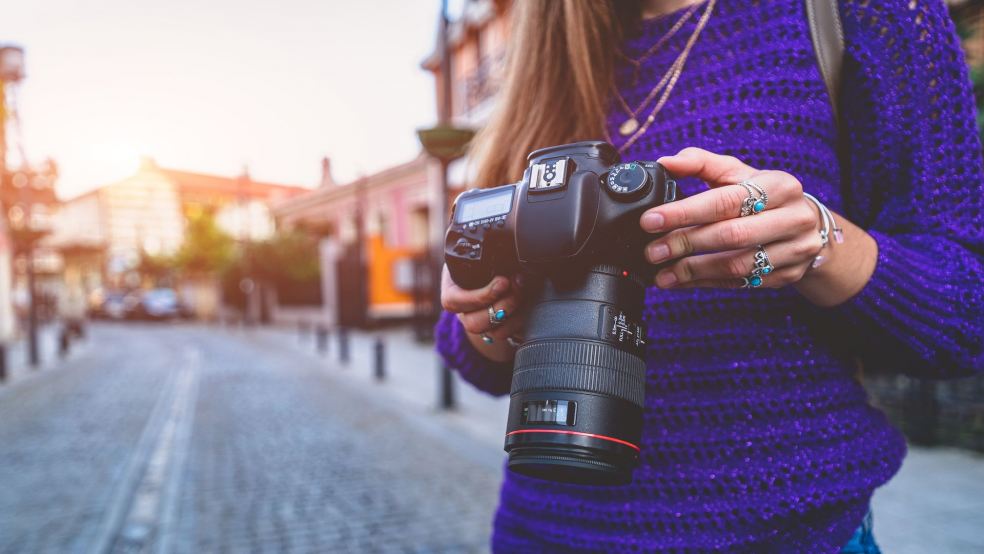
5 Pros And Cons of Using Bridge Cameras for Photography
Bridge cameras, as the name implies, bridge the gap between point-and-shoot and digital single-lens reflex (DSLR) cameras. They typically have straightforward point-and-shoot controls and fundamental DSLR dials and settings. You can also use bridge cameras to learn the basic controls and dials on a DSLR.
Suppose you've already been using point-and-shoot cameras and are looking for an advanced mode camera. In that case, you might think about honing your bridge camera skills for your upcoming photography sessions. But first, consider the advantages and disadvantages of bridge cameras. This way, you can determine whether it can fulfill your photography requirements. So, read on!
Pros
- It's Generally Cheaper Than DSLR
The average price range of bridge cameras is GBP£250- GBP£500. At the same time, more advanced bridge cameras may cost GBP£825 and above. Still, they're generally cheaper than DLSR's price range which is GBP£750 and above. With these prices, a newbie photographer can learn the fundamental dials and features of a semi-SLR camera with compact-type controls.
Apart from these, the accessories of bridge cameras also cost less than that of interchangeable-lens cameras. And because bridge cameras use a single lens, they won't require a photographer to purchase the various lenses used for distant and macro photography. You may visit your local brick-and-mortar camera shops or their site for more info about the prices.
- It Provides a Wide Zoom Capability
Using fixed lenses, bridge cameras offer a massive zoom range, reaching up to 1200mm. However, a photographer must balance distance, stability, and sharpness to produce high-quality images.
- It Features a Decent Set Of Capabilities
Bridge cameras typically include more advanced features than compact types, such as image stabilization, screen tilt, LCD, and ultra-zoom capability. Because of these features, these cameras can produce better images in terms of perspective and sharpness. In addition, a bridge camera must maximize the available light source and match it with at least ¼ aperture to ensure excellent image quality.
- It's Easy To Use
Bridge cameras are easy to use, primarily if you've used point-and-shoot cameras. Most bridge cameras feature a simple interface and automatic settings that help beginners take great photos. Moreover, these settings can also be manually adjusted, similar to DSLR features that contribute to creating excellent images.
- It's More Portable
Bridge cameras generally weigh 1.3-2.4 lbs. on an average basis. In addition, they are also relatively smaller than DSLR types. Because of this, they're light and easy to carry, making them appropriate for random photography in streets, nature, and during your travel to various countries.
Cons
- It Has A Slower Shutter Speed
Slow shutter speed tends to create blurred images for moving objects. For that reason, bridge cameras may be more appropriate for capturing still subjects. To avoid blurry photos, you may consider using tripods or learning the timing of pressing the shutter.
- It Has Lesser Image Quality Than DSLR Single Lens
Since bridge cameras have a single fixed lens, they can't adjust the image quality compared to DSLRs because of the latter's interchangeable zoom, wide-angle, and 30mm lenses. These lenses enable DSLR cameras to take photos of moving and far subjects.
Consequently, producing top-notch photos can be challenging in bridge cameras, especially if the photographer desires high-quality images of the subjects from a considerable distance. In many cases, photographers using bridge types may need to delay their shutter pressing to capture sharper photos.
- It Has Generally Low Native ISO Sensitivity
Bridge cameras may require a user to learn how to adjust ISO sensitivity since these cameras generally have low ISO sensitivity. Using manual controls, bridge camera users must know how to change the ISO sensitivity in different light conditions.
- It Has Only An Electronic Viewfinder
Many bridge cameras only have an electronic viewfinder, such as the liquid crystal display (LCD) or electronic viewfinder (EVF). While this viewfinder can provide valuable data about the image to take, they're also known to drain the battery fast and work only when the camera is on. In addition, most electronic viewfinders have limited outdoor visibility, especially when the light setting is high.
- It Has A Restricted Range Of Apertures
Aperture, along with shutter speed and ISO, composes the Exposure Triangle that affects image quality. Bridge cameras' low range of apertures affects the depth of field and the image resolution. As a result, a bridge camera user must master F-stop dials to control it.
Wrapping Up
Suppose you've been using a point-and-shoot camera for a while, and you’re interested in branching out to other types of cameras but aren't ready to invest in a high-end DSLR. In that case, a bridge camera can help you learn the fundamentals of DSLR photography while maintaining the convenience of a compact model.
Furthermore, you can read this article for tips and insights to better understand what bridge cameras have in store for you. Additionally, this article offers advice on how to make the most of your bridge camera's benefits and minimize its drawbacks.











